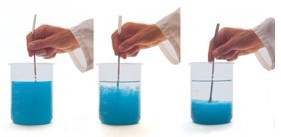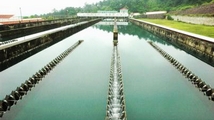Industries
Whether its wastewater reuse, process water treatment for industry, high purity water for sensitive medical or scientific applications, or systems to supply clean drinking water, we've provided answers to some of the world’s most pressing water challenges.

History of the water treatment: The importance of good drinking water in maintaining human health was recognised early in history. However, it too centuries before people understood that their senses alone were not adequate judges of water quality. The earliset water treatment were based on filtering and driven by the desire to remove the taste and As a result, drinking water treatment systems were designed to reduce turbidity, thereby removing pathogens that were causing typhoid, dysentery and cholera.
By the early twentieth century, better protection of water supplies from sewage pollutiono and simple but effective methods of water treatment had greatly reduced rates of waterborne disease in developed nations. Since then, scientists and engineers have been developing ways of processing water more quickly, more effectively, in a more controlled way and at lower cost.
Application
Drinking water treatment
Industry water treatment
Waste water treatment
Sewage water treatment
boiler water treatment
Paper making water treatment
Cosmetics auxiliaries medicament
Daily chemicals water purification
Coal washing water treatment
Oil filed wastewater
Printing& dyeing industry
Leather industry waste water
Drinking water treatment overview
The appearance of particles in water. Filteration was established as an effective means of removing particles from water and widely adopted in Europe during the eighteenth century. Exactly why a clean and reliable water supply was needed was not know until the second half of the nineteenth century, when the nature of infectious disease was first recognised and the ability of water supplies to transmit diseases such as cholera and typhoid was first demonstrated. After this, concerns about the quality of drinking water focused on disease- causing microorganisms in public water supplies. Scientists discovered that visible cloudiness, or turbidity, not only made the water look unappealing, it could also indicate a health risk. The turbidity was caused by particles in water that could harbor pathogens.
Most urban comminities collect water from a natural water body in the catchment, whether a stream, river, or underground aquifer. The water collected may then be stored in a reservoir for some time. Unless it is already of very high quality, ti then undergoes various water treatment processes that remove any chemicals, organic substances or organisms that could be harmful to human health. The water is then delivered to the community through a network of mains and pipes called a distribution system.

Coagulation/ Flocculation >>> Filtration >>>
Adsoprtion >>> Oxidation >>> Water Stabilisation
HQ Advantage
We Custom Designed Polymers HQ Advanced polymers reduce sludge volume and improve influent water.
Apply to different kind of water, we customize designed for you.
Coagulants and Flocculants HQ polymers helps to remove organice color, iron, calcium hardness from raw water. HQ polyers could designed for all kind of PH adjustment, decreases the load on demineralizers, increase filter through put and specially reduces sludge volume.
- Reduces sludge volume
.Improves efficiency in recycle system
Increases settling rates.
Improves process operations
Produces cleaner, clearer drinking water
 MSN
MSN E-mail
E-mail